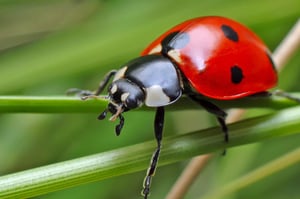The antibiotics of tomorrow may also come from an unexpected source: insects or, to be more precise, from the (Streptomyces) bacteria that infect insects, or that live in symbiosis with them. The idea came from researchers from the University of Wisconsin-Madison (USA), guided by Cameron Currie, who in the past had already noticed a positive effect of several “host” bacteria on insects. As reported in the scientific journal Nature Communications, Currie then decided to check whether these types of “good” bacteria produce substances are also capable of effectively combatting human pathogens.
And hence, the US researcher, together with his team, collected more than 1400 types of insects from the main insect families (flies, moths, ants, bees and butterflies, as well as beetles and others) from different areas of North and South America, and isolated the Streptomyces they carried. Thanks to a lengthy analysis process and (more than 50,000) cross-tests, the microbiologists then measured the ability of each of the (thousands of) microorganisms identified on the insects to inhibit the growth of 24 types of bacteria and fungi, chosen from those that represent the greatest threat to human health due to their resistance to classic antibiotics.
The results showed that different bacteria transmitted by the insects (in reality, the substances produced by them) also had a protective effect against human pathogens. In particular, a molecule extracted from a Brazilian ant was very effective in laboratory tests (also on mice) against pathogenic fungi. The researchers called it cyphomycin and patented it. Now Currie’s team is getting ready to extend the trials directly to humans.
But why do the microorganisms found in insects help us to combat the most difficult bacteria to tame, better than what the Streptomyces do that have been used, for some time, to produce antibiotics, like Streptomycin? Because – explain the researchers – the Streptomyces that have been used to produce antibiotics up to now have been taken from the soil and therefore have followed a very different evolutionary path than that of insects, over the course of hundreds of millions of years. Now – add the researchers – we are also starting to examine this different “environment” (i.e. that of insects) and we are discovering a new chemistry.
As we said, cyphomycin has shown itself to be particularly effective. But there are also other molecules that appear to be interesting and that will undergo new tests.

